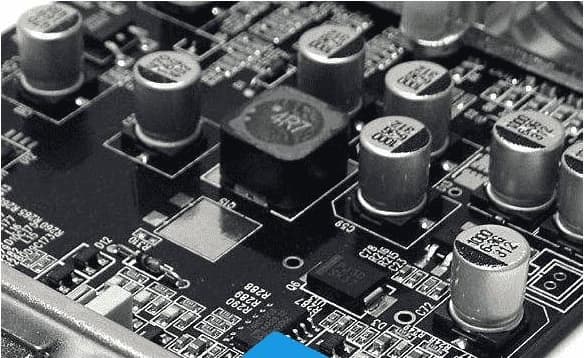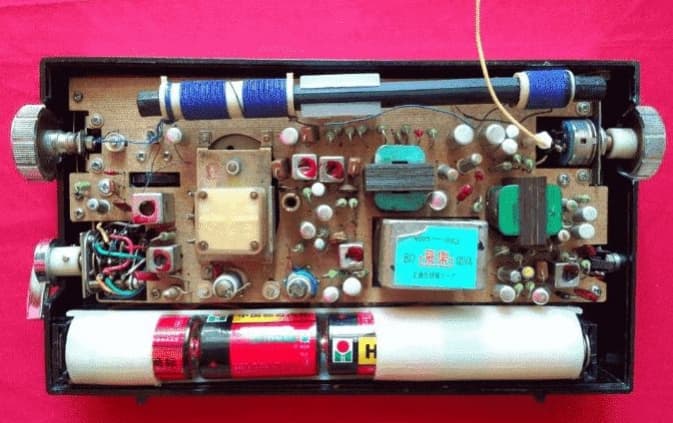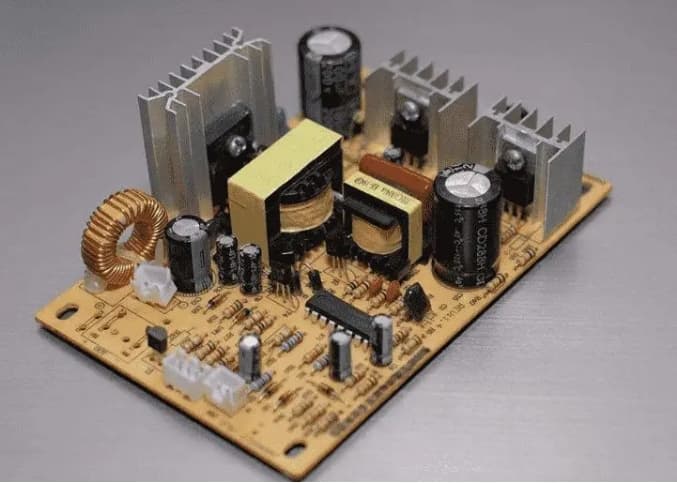Electronic Components Basics
•
AnyPCBA


Resistors
Resistor, which is a current limiting element. When a resistor is connected to a circuit, the resistance value of the resistor is fixed, usually by two pins. Fixed resistors are those whose resistance cannot be changed. Resistor variables are called potentiometers or variable resistors. The ideal resistor is linear, i.e., the instantaneous current through the resistor is proportional to the instantaneous voltage applied.Variable resistors used for voltage dividing. One or two removable metal contacts are pressed firmly against the body of the resistor. The position of the contacts determines the resistance between either end of the resistor body and the contacts. Types of household resistors consist of four parts (not applicable to sensitive resistors)
- 1: The main name, in letters, represents the product name. Similar to resistor, W stands for potentiometer.
- 2: The material shown in the letter indicates the material used for body strength, T Carbon film, H Synthetic carbon film, S Organic solid, N Inorganic solid, J Metal film, Nitride film Y, Film deposited in C, Glass glazed film I, X-ray film.
- 3: Classification, generally expressed as a number, with individual letters expressed as letters indicating the type of product.1-normal, 2-normal, 3-uhf, 4-high resistance, 5-high temperature, 6-precision, 7-precision, 8-high voltage, 9-special, g-high power, t-adjustable.
- 4: Serial number, expressed as a number, represents different types of similar products to differentiate the product's external dimensions and performance specifications, e.g., RT 1-type normal carbon film resistors.

Capacitors
Capacitor is one of the most widely used electronic components in electronic equipment. It is widely used in isolation, coupling, bypass, filtering, tuning circuits, energy conversion and control circuits. Capacitors are denoted by C-capacitance, capacitance farad (F), microfarad (uF), leather farad (pF), 1 F = 10 uF = 10 ^ 6 ^ 12 pF. Capacitor models are usually made up of four parts (not applicable to pressure-sensitive capacitors, variable capacitors and vacuum capacitors). In turn, they represent name, material, category and serial number.- 1: Name, letter form, capacitor C.
- 2: Material, in the form of a letter.
- 3: Classification, usually in numerical form, single letter.
- 4: Serial number, indicated by a number. With letters Product Material: Tantalum electrolytic, B - polystyrene non-polar high-frequency ceramic film, C - , D - electrolytic aluminum electrolytic, E - other materials, G - alloy electrolytic, H - composite dielectric, I - vitreous enamel, J - metallized paper, L - polyester and other polar organic films, N - niobium electrolyte, O - vitreous film, Q - thin film, T - low-frequency ceramic, V - mica paper, mica, Z - Y-paper.

Inductors
Inductors are not used as much in electronic fabrication, but they are just as important in circuits. We consider inductors, like capacitors, to be energy storage elements that convert electrical energy into magnetic field energy and store energy in the magnetic field. Inductors are symbolized by inductor.Is with L-, Henry (H), Henry (MH), Henry (UH ), 1 H = 10 ^ 3 mH = 10 ^ 6 uH. Classification of inductors: fixed inductors, variable inductors. According to the nature of magnetic conductivity: hollow coil, ferrite coil, iron core coil, copper core coil. According to the working nature: antenna coil, oscillating coil, choke coil, trap coil, deflection coil. According to the winding structure: single layer coil, multi-layer coil, honeycomb coil. The main characteristics of the inductor coil parameters.- 1: Inductance L indicates the inherent characteristics of the coil itself, independent of the current magnitude. Except for special inductive coils (color-coded inductors), the inductance quantity is usually not specifically marked on the coil, but with a specific name.
- 2: The impedance of an XL inductor coil to AC current is called XL in ohms. It is related to the inductance L and the AC frequency f by XL = 2 stored fL.
- 3: Quality Factor Q The quality factor Q expresses the physical quantity coil quality, Q is the ratio of the inductance XL rather than the equivalent resistance, i.e., Q = XL / R coil, the higher the value of Q, the lower the losses in the loop. The Q of a coil is related to the DC resistance of the wire, the dielectric losses of the frame, the losses caused by the shielding or core, and the effects of the high-frequency skin effect. The Q of a coil is usually in the tens and hundreds range.
- 4: Distributed Capacitors Between Coil and Shield, Between Coil and Base Plate The capacitance between the turns and turns of a coil is called the distribution capacitance. The presence of distribution capacitance reduces the Q of the coil and decreases the stability of the coil, so the smaller the distribution capacitance of the coil, the better.
Semiconductor Devices
Semiconductor Device Model Nomenclature The semiconductor device model consists of five parts (field effect devices, semiconductors, PIN-type tubes, special devices, and types of laser devices named only Part III, Part IV, and Part V). The meanings of these five parts are as follows:- 1: A numerical representation of the number of effective electrodes of a semiconductor device.
- 2:A letter indicating the material and polarity of the semiconductor device. Representing diode: germanium material, bp germanium material, cn silicon material, dp silicon material. Represents a triode: a-pnp germanium material, b-npn germanium material, c-pnp silicon material, d-npn silicon material.
- 3: Use the letters to represent the internal type of semiconductor device.P - plain tube, V - microwave tube, W - regulator tube, pipe, Z - C - parametric rectifier tube, L - rectifier stack, S - tunnel. Pipes, N - damping, U - optoelectronic devices, K - switching tubes, small X-ray low-frequency power tubes (F < 3 MHZ, Pc < 1 W), G - high-frequency low-power tubes (F > 3 MHZ, Pc < 1 W), D - low-frequency high-power tubes (F < 3 MHZ, Pc> 1 W), A - high-frequency high-power tubes (f > 3 MHZ, Pc> 1 W), T - semiconductor thyristor (controlled) rectifiers ), Y - body effect devices, B - avalanche tubes, J - step recovery, CS - field effect tubes, BT - semiconductor special devices, FH - tubes, PIN - PIN tubes, JG - lasers.
- 4: V: Alphabetical list used for specification numbering, e.g., 3DG18 for NPN silicon material high frequency triodes.
 AnyPCBA
AnyPCBA
October 22, 2024